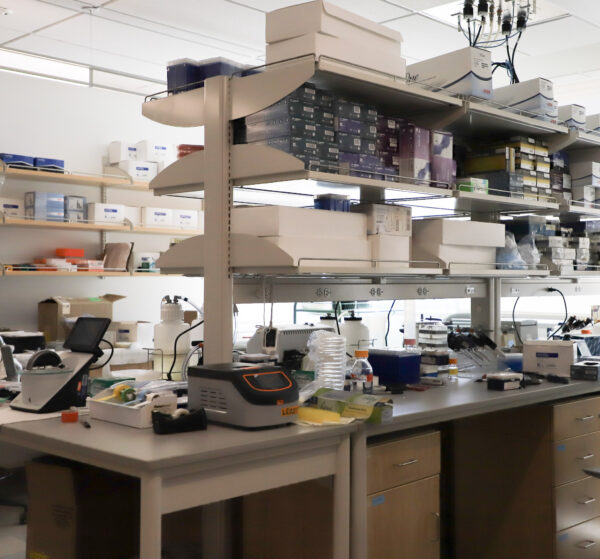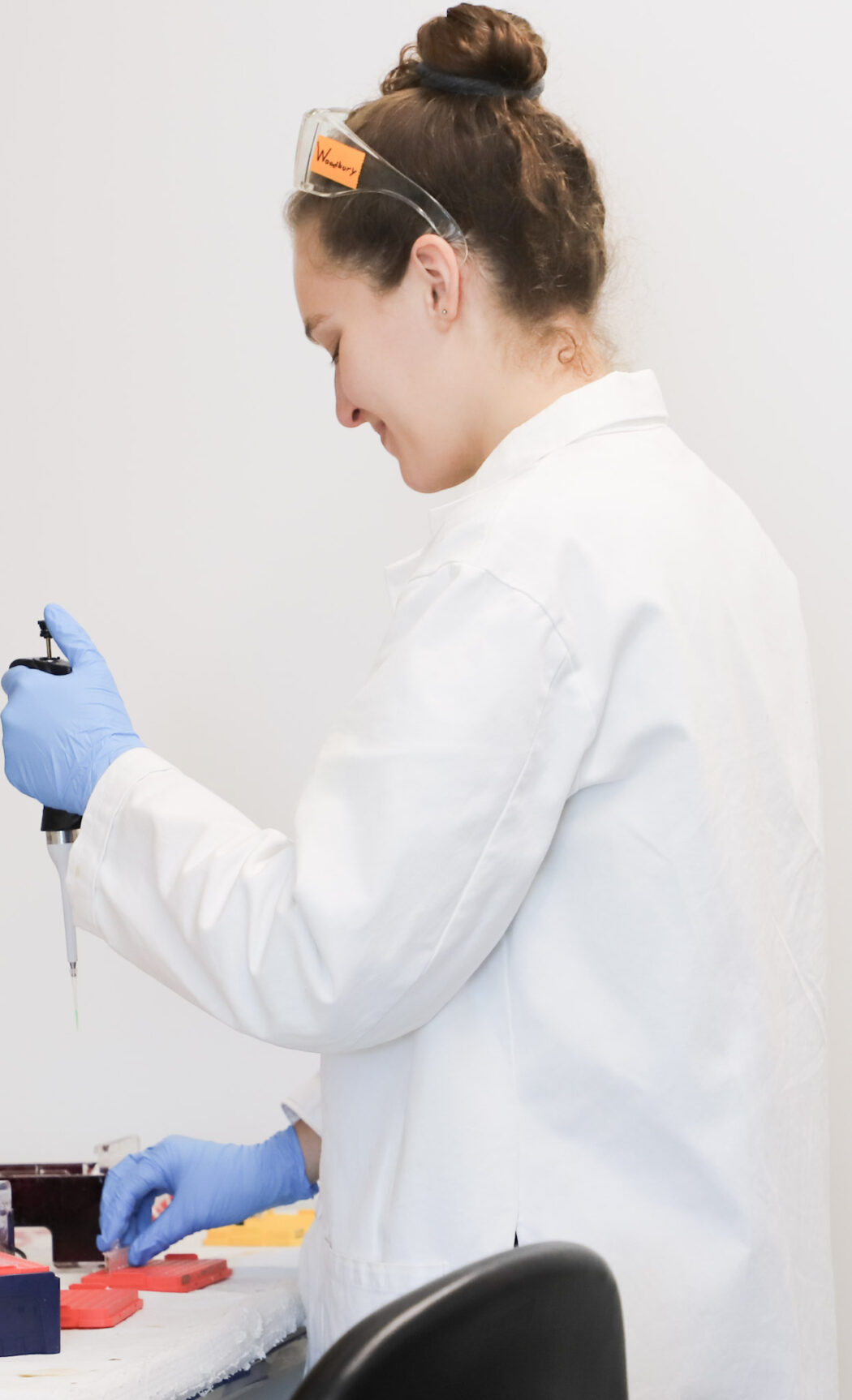Utah’s Plant Pest Diagnostic Lab researches potential invasive species
Utah’s Plant Pest Diagnostic Lab researches and diagnoses pest problems and plant diseases of arthropods. This resource provides services that increase new discoveries and help the agricultural community in all of Utah by ensuring a safe environment for farmers and homeowners.
UPPDL is located in both the Life Sciences building and the Biology and Natural Resources building. It gives anyone from any part of Utah the resources to protect their land — whether that be a garden at home or a farm.
Claudia Nischwitz is a plant pathology specialist. She spends her time working and leading students in the plant lab that is located on the third floor of the Life Sciences building.
“A commercial farmer or a homeowner can send a sample if they think their plants don’t look right and then we will try to diagnose what the problem is,” Nischwitz said. “The problems can vary from fungal bacteria disease, frost damage and insect feeding,”
UPPDL deals with a variety of problems that can occur in any form of agriculture, whether that be the garden at home, a farm or an invasive species.
Alexander Knudson is the arthropod diagnostician and professional practice extension assistant professor.
“This resource is for anyone,” Knudson said. “For example, we’ve had people send in pictures of what they think might be bed bugs and we’re able to identify it for them via email. If someone sends me a suspected invasive species photograph, I get to that as quickly as possible because if it is an invasive species we can notify the Utah Department of Food and Agriculture and the United States Department of Agriculture to solve the problem.”
Whether you are a farmer or a college student living in a dorm, this resource can be useful for anyone and they offer free consultations via email where the problem is addressed within 24 hours.
UPPDL has two different sides to it, each one working hand in hand to create a better community for all of Utah. There are two different labs, one focusing on researching plant diseases and the other focusing on researching pests and bugs.
“Every day is something different,” Nischwitz said. “You never know what is going to come through the door. You may plan out your day and completely change it by the end of the day. There is a lot of variety in our work.”
The bug lab is currently working on a variety of projects. With emails and physical samples coming in every day, there is always a potential problem or an opportunity to educate the community.
“We had a client send in a lawn sample who wanted to know if they had insects or a plant disease,” Knudson said. “The plant lab has already looked at it and determined there was no disease. Now we will run it through a Berlese funnel, which makes possible insects or arthropods fall down into a jar of ethanol. If we aren’t able to find invasive species, we will go back to the photos they submitted and the management they have put their lawn through in order to determine if it was abiotic condition or a pest.”
Both labs work together to diagnose samples. Normally the bug lab looks at physical samples first to detect pests, then the plant lab will look at the sample for a possible disease. The plant research lab currently has student volunteers and researchers focusing on detecting possible plant diseases.
Skylar Andam is a senior majoring in exercise science and pre-med who spends his time in the plant lab researching possible plant disease.

“I’m just researching dahlia plants and the diseases they have,” Andam said. “Right now, we are trying to determine if a disease in a dahlia plant can be found in all or just a few of the tubers. Currently, tests will come back with results that only some of the tubers have diseases, which can be distressing for farmers because they won’t know what parts of the plant to throw away or keep.”
Both labs are often filled with different things to research. However, they don’t just spend all of their time in a lab.
“Sometimes when you’re in a research lab you are often thought of as being stuck in the lab,” Knudson said. “But, we do a lot of going out and meeting people where they are and providing them the opportunities to learn. Whether that is in person, or virtually online as well.”
A big part of this extension is going out into the field to research the problem and help educate others.
“You never know when you are going to get sent out to the field to solve immediate problems for farmers,” Nischwitz said.
A big part of UPPDL’s mission is to also educate community members and help them with their own individual research projects.
“We help people out with research projects as well,” Knudson said. “We recently received around 100 samples of insects that we will help identify and diagnose the impact these insects had on oil placement.”
This resource is available for everyone in Utah and can be helpful to people that aren’t in a field related to agriculture or science.
“We have many different workshops that educate the community,” Knudson said. “A popular workshop for people that don’t have a lot of background knowledge in this subject is our first detective training workshop. This workshop essentially helps train people on how to identify forms of invasive species. These skills are useful no matter what your background is. There are insects everywhere and it is very important to be able to identify them when you encounter them.”
These workshops are offered online and in-person.
Like Knudson said, this is viable for anyone, no matter what their background is. We all spend time outdoors and the knowledge UPPDL offers adds a layer of protection to community members.
The education only starts with UPPDL’s community outreach. There are also opportunities for people to educate themselves by working inside the lab. Many different students at USU are able to get first hand experience by getting a job with UPPDL.
Savannah Gleason is another student at USU who works at the plant lab. She is a senior majoring in conservation and restoration ecology.
“I’ve worked here for over two years now,” Gleason said. “I first started the job during COVID and have loved how unique the job is. I have learned so much and have enjoyed learning how lab work actually is. My main job is to research the samples we receive and there is never a dull day.”
The plant lab is currently looking for another student with high interest in this field to start working there. The bug lab will also be looking for an extension intern soon.
“There is nothing like the first hand experience you get in here,” Andam said. “Most people may not realize this, but research is fun and that’s exactly what this job lets you do.”
Most current employees agree that this lab can set students up for a great future and a very unique educational experience. Visit the UPPDL website for more information regarding workshops, educational resources, help with invasive species and job opportunities.

